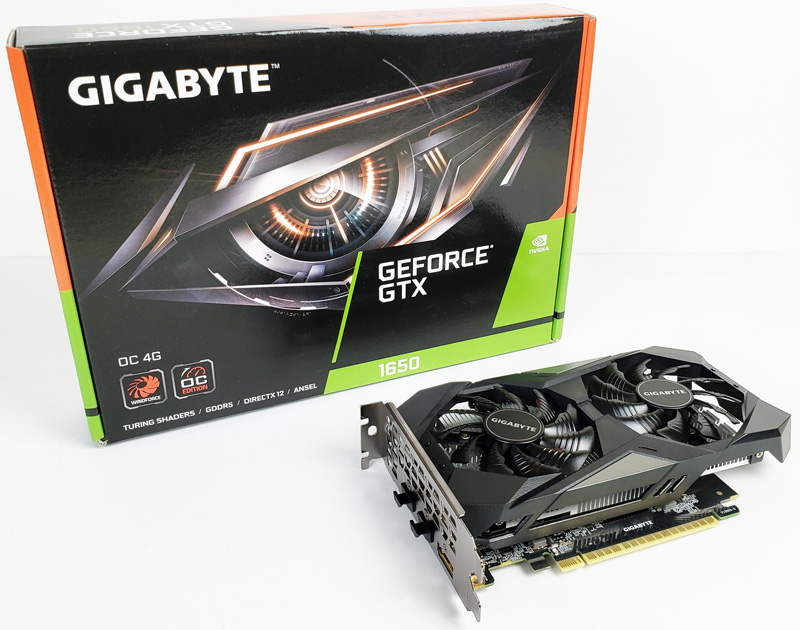In the ever-evolving world of gaming, having a capable graphics card is crucial for an immersive and visually stunning experience. NVIDIA, a renowned name in the industry, has been consistently pushing boundaries with their range of graphics cards. Among their offerings is the NVIDIA GTX 1650, a budget-friendly option that promises to deliver solid gaming performance. In this article, we will dive into the details of the GTX 1650 and determine if it can truly hold its own in the competitive gaming landscape.
The Specs:
The NVIDIA GTX 1650 is based on the Turing architecture and is equipped with 896 CUDA cores. It boasts a base clock speed of 1485 MHz, which can boost up to 1665 MHz. With 4GB of GDDR5 memory running on a 128-bit memory interface, it offers a reasonable amount of memory bandwidth. In terms of power requirements, the GTX 1650 is relatively efficient, drawing its power solely from the PCIe slot, eliminating the need for an additional power connector.
Performance Analysis:
When it comes to gaming, performance is key, and the GTX 1650 manages to deliver respectable results. While it may not be a top-of-the-line option, it still provides a smooth gaming experience in many popular titles. In 1080p gaming, the GTX 1650 performs admirably, allowing for smooth frame rates in games like Fortnite, Overwatch, and Apex Legends. However, for more demanding AAA titles, you may need to make some compromises in terms of graphics settings to maintain a playable frame rate.
The GTX 1650 also shines when it comes to esports titles, where high frame rates are crucial for competitive play. Games like League of Legends, Counter-Strike: Global Offensive, and Rocket League can be comfortably played at high settings, ensuring an enjoyable gaming experience without breaking the bank.
In terms of power consumption, the GTX 1650’s efficiency is a notable advantage. It is designed to operate within a 75W power envelope, making it a suitable choice for small form factor builds or systems with limited power supply capabilities.
Considerations and Alternatives:
While the GTX 1650 offers a decent gaming experience at 1080p, it’s important to consider the alternatives available on the market. The graphics card landscape is constantly evolving, and newer models might offer better price-to-performance ratios. NVIDIA’s own GTX 1660 series or the more recent GTX 1660 Super, for example, provide a significant performance boost at a slightly higher price point. Alternatively, you could explore AMD’s offerings, such as the Radeon RX 5500 XT or RX 5600 XT, which may offer better value for your money.
Conclusion:
The NVIDIA GTX 1650 is a solid budget-friendly graphics card that can handle 1080p gaming with ease. While it may not deliver the same level of performance as higher-end options, it provides an accessible entry point for casual gamers or those on a tight budget. Its power efficiency and compatibility with small form factor builds are additional advantages worth considering. However, it’s important to weigh your options and research the latest offerings from both NVIDIA and AMD to ensure you’re making the best choice for your specific gaming needs and budget.
FAQs
Can the NVIDIA GTX 1650 handle VR gaming?
While the GTX 1650 can technically support VR gaming, its performance may not be optimal for a smooth and immersive VR experience. VR games tend to be more demanding in terms of graphics and processing power. For a better VR experience, it is recommended to consider higher-end graphics cards like the GTX 1660 series or higher, or AMD’s Radeon RX 5000 series.
Does the GTX 1650 support ray tracing?
No, the GTX 1650 does not have dedicated hardware for ray tracing, unlike the higher-end RTX series from NVIDIA. Ray tracing is a technology that enhances lighting, reflections, and shadows in games, providing a more realistic visual experience. If ray tracing is a priority for you, you will need to consider a graphics card from the RTX series.
Can the GTX 1650 run games at 4K resolution?
The GTX 1650 is not designed for 4K gaming. It is better suited for 1080p gaming or, at most, some lighter titles at 1440p resolution. If you are aiming for a smooth 4K gaming experience, you should consider more powerful graphics cards like the RTX 30 series or the AMD Radeon RX 6000 series.
Is the GTX 1650 future-proof?
While the GTX 1650 can handle current games at 1080p resolution, it may struggle with future, more demanding titles. As games continue to evolve and become more graphically intensive, the GTX 1650’s performance may start to fall behind. If you want a more future-proof graphics card, you should consider higher-tier options that offer better performance headroom.
Does the GTX 1650 require an external power connector?
No, the GTX 1650 is designed to draw power solely from the PCIe slot on your motherboard. This eliminates the need for an external power connector, making it more convenient for systems with limited power supply capabilities or smaller form factor builds. However, it is still important to ensure that your power supply can handle the overall power requirements of your system, including the graphics card.
